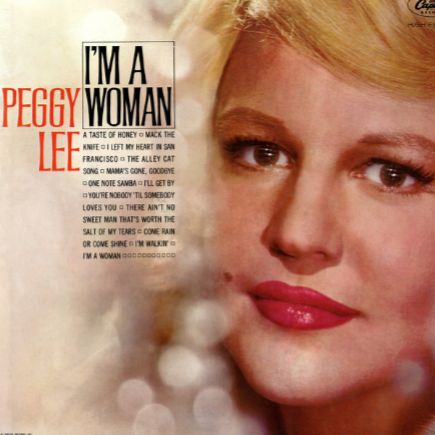Come Rain or Come Shine: entre passion inaltérable et lyrisme sophistiqué
Composé en 1946 par Harold Arlen, sur des paroles de Johnny Mercer, Come Rain or Come Shine s’impose comme l’un des standards les plus expressifs du répertoire vocal jazz. Créée pour la comédie musicale St. Louis Woman, cette ballade à la structure harmonique sobre mais subtile a traversé les époques, portée par une intensité émotionnelle rarement égalée.
Le spectacle fut un échec commercial et fut suspendu après 113 représentations, mais Come Rain or Come Shine, lancée sur scène par Ruby Hill et Harold Nicholas, deviendra très populaire. Elle mêle le lyrisme d’Arlen, maître des contrastes mélodiques, à la poésie épurée de Mercer, dans une déclaration d’amour inconditionnelle qui transcende les styles et les générations.
Derrière une apparente simplicité se cache une œuvre d’une grande richesse interprétative. Chaque reprise révèle une facette différente: dramatique chez Billie Holiday, feutrée chez Sarah Vaughan, brillante et théâtrale avec Judy Garland ou Barbra Streisand, ancrée dans le swing pour Ray Charles, ou réinventée en jazz modal par Bill Evans.
Ce pouvoir de réinvention tient à la souplesse du matériau initial: une mélodie large, ouverte, propice à la variation, et des accords qui offrent un terrain fertile pour l’improvisation. L’interprétation de Diane Schuur en 1986 a reçu un Grammy pour le meilleur enregistrement vocal de jazz féminin.
Peggy Lee et la puissance tranquille du sentiment
Le 5 janvier 1963, à Hollywood, Peggy Lee enregistre une version magistrale de Come Rain Or Come Shine pour l’album I’m A Woman, entourée d’un orchestre dirigé par Richard Hazard. L’arrangement de Hazard déploie une architecture sonore subtile, où la chaleur du big band se marie à la finesse de la section rythmique. La trompette de Manny Klein et le trombone de Dave Wells ajoutent des éclats cuivrés à la texture orchestrale, tandis que la flûte de Paul Horn apporte une touche aérienne, presque méditative.
Mike Melvoin au piano, John Pisano et Al Hendrickson aux guitares, ainsi que Max Bennett à la basse et Stan Levey à la batterie, forment une base rythmique d’une précision exemplaire, rehaussée par les percussions colorées de Francisco Aguabella. L’ensemble dégage une ampleur à la fois orchestrale et intimiste, laissant la voix de Lee respirer pleinement.
Peggy Lee s’empare de Come Rain Or Come Shine avec une assurance souveraine. Sa voix, à la fois chaude et mesurée, avance avec calme, maîtrise et conviction: chaque mot semble pesé et chaque silence pensé.
Come Rain or Come Shine: entre pasión inalterable y lirismo sofisticado
Compuesta en 1946 por Harold Arlen, con letra de Johnny Mercer, Come Rain or Come Shine se impone como uno de los estándares más expresivos del repertorio vocal del jazz. Escrita para el musical St. Louis Woman, esta balada de estructura armónica sobria pero sutil ha atravesado las décadas impulsada por una intensidad emocional pocas veces igualada.
El espectáculo fue un fracaso comercial y se suspendió tras 113 funciones, pero Come Rain or Come Shine, estrenada en escena por Ruby Hill y Harold Nicholas, alcanzó gran popularidad. Fusiona el lirismo de Arlen —maestro en contrastes melódicos— con la poesía depurada de Mercer, en una declaración de amor incondicional que trasciende estilos y generaciones.
Bajo su aparente simplicidad se oculta una obra de enorme riqueza interpretativa. Cada versión revela una dimensión distinta: dramática con Billie Holiday, íntima con Sarah Vaughan, brillante y teatral en las voces de Judy Garland o Barbra Streisand, profundamente swing con Ray Charles o reinterpretada en clave modal por Bill Evans.
Este poder de reinvención se explica por la flexibilidad del material original: una melodía amplia, abierta, que invita a la variación, y una secuencia de acordes ideal para la improvisación. La interpretación de Diane Schuur en 1986 recibió un premio Grammy al mejor registro vocal de jazz femenino.
Peggy Lee y la fuerza tranquila del sentimiento
El 5 de enero de 1963, en Hollywood, Peggy Lee grabó una versión magistral de Come Rain Or Come Shine para el álbum I’m A Woman, acompañada por una orquesta dirigida por Richard Hazard. El arreglo despliega una arquitectura sonora sutil, donde el calor del big band se combina con la precisión de una sección rítmica refinada. La trompeta de Manny Klein y el trombón de Dave Wells añaden matices metálicos a la textura, mientras la flauta de Paul Horn introduce un tono aéreo, casi meditativo.
Mike Melvoin al piano, John Pisano y Al Hendrickson a las guitarras, Max Bennett en el contrabajo, Stan Levey en la batería y Francisco Aguabella en las percusiones conforman una base rítmica de una precisión ejemplar, que otorga al conjunto una amplitud tanto orquestal como íntima, permitiendo que la voz de Lee respire con libertad.
Peggy Lee aborda Come Rain Or Come Shine con una seguridad soberana. Su voz, cálida y mesurada, avanza con calma, dominio y convicción: cada palabra parece medida, cada silencio cuidadosamente pensado. En esta interpretación, la artista alcanza una madurez plena, transformando la sencillez melódica en una lección de profundidad emocional.
Come Rain or Come Shine: tra passione incrollabile e lirismo raffinato
Composta nel 1946 da Harold Arlen, su testo di Johnny Mercer, Come Rain or Come Shine si è affermata come uno degli standard più intensi e suggestivi del repertorio jazz vocale. Scritta per il musical St. Louis Woman, questa ballata dalla struttura armonica sobria ma raffinata ha attraversato il tempo, sospinta da un’emozione vibrante e senza tempo.
Lo spettacolo fu un insuccesso commerciale e fu interrotto dopo 113 repliche, ma Come Rain or Come Shine, lanciata in scena da Ruby Hill e Harold Nicholas, divenne presto un brano molto popolare. Arlen, maestro nei contrasti melodici, unisce qui il suo lirismo alla purezza poetica di Mercer, in una dichiarazione d’amore assoluto che supera epoche e generi.
Dietro la sua apparente semplicità, si cela una ricchezza interpretativa straordinaria. Ogni rilettura ne svela un volto nuovo: drammatica con Billie Holiday, intima con Sarah Vaughan, teatrale e scintillante con Judy Garland o Barbra Streisand, immersa nello swing con Ray Charles, o esplorata in chiave modale da Bill Evans.
La forza di questo brano risiede nella duttilità della sua struttura: una melodia ampia, aperta, ideale per la variazione, e una progressione armonica che stimola l’improvvisazione. L’interpretazione di Diane Schuur del 1986 vinse il Grammy Award per la miglior performance vocale jazz femminile.
Peggy Lee e la forza tranquilla del sentimento
Il 5 gennaio 1963, a Hollywood, Peggy Lee incise una versione magistrale di Come Rain Or Come Shine per l’album I’m A Woman, accompagnata da un’orchestra diretta da Richard Hazard. L’arrangiamento disegna un’architettura sonora sottile, in cui il calore del big band si unisce alla precisione della sezione ritmica. La tromba di Manny Klein e il trombone di Dave Wells aggiungono riflessi metallici alla tessitura orchestrale, mentre il flauto di Paul Horn introduce una nota aerea, quasi meditativa.
Mike Melvoin al pianoforte, John Pisano e Al Hendrickson alle chitarre, Max Bennett al contrabbasso, Stan Levey alla batteria e Francisco Aguabella alle percussioni creano una base ritmica di grande precisione, che conferisce all’insieme un respiro insieme orchestrale e intimo, lasciando alla voce di Lee piena libertà.
Peggy Lee affronta Come Rain Or Come Shine con sovrana sicurezza. La sua voce, calda e misurata, procede con calma, padronanza e convinzione: ogni parola appare pesata, ogni silenzio pensato. In questa interpretazione, l’artista raggiunge una piena maturità, trasformando la semplicità melodica in un atto di intensa espressività.
Come Rain or Come Shine: unwavering passion and sophisticated lyricism
Composed in 1946 by Harold Arlen, with lyrics by Johnny Mercer, Come Rain or Come Shine stands as one of the most emotionally resonant standards in the vocal jazz canon. Written for the musical St. Louis Woman, this ballad—modest in structure yet harmonically nuanced—has endured through the decades, carried by a rare emotional intensity.
Though the show itself was a commercial failure, closing after 113 performances, Come Rain or Come Shine, first introduced on stage by Ruby Hill and Harold Nicholas, quickly gained widespread popularity. It blends Arlen’s melodic richness—he was a master of contrast—with Mercer’s distilled poetry, forming a timeless declaration of unconditional love that transcends styles and generations.
Beneath its surface simplicity lies a composition of great interpretive depth. Each version brings out a new shade: haunting with Billie Holiday, intimate with Sarah Vaughan, theatrical and radiant with Judy Garland or Barbra Streisand, grounded in swing with Ray Charles, or reimagined through modal jazz by Bill Evans.
Its versatility stems from the flexibility of its core: an open, spacious melody inviting variation, and a harmonic structure ripe for improvisation. Diane Schuur’s 1986 rendition earned her a Grammy Award for Best Female Jazz Vocal Performance.
Peggy Lee and the quiet power of feeling
On January 5, 1963, in Hollywood, Peggy Lee recorded a masterful version of Come Rain Or Come Shine for the album I’m A Woman, accompanied by an orchestra conducted by Richard Hazard. Hazard’s arrangement unfolds a subtle sound architecture in which the warmth of the big band blends with the precision of a refined rhythm section. Manny Klein’s trumpet and Dave Wells’s trombone add metallic flashes to the orchestral texture, while Paul Horn’s flute contributes an airy, almost meditative touch.
Mike Melvoin on piano, John Pisano and Al Hendrickson on guitars, Max Bennett on bass, Stan Levey on drums, and Francisco Aguabella on percussion form a rhythm section of exemplary precision, giving the ensemble both orchestral breadth and intimate space for Lee’s voice to breathe freely.
Peggy Lee approaches Come Rain Or Come Shine with sovereign assurance. Her voice, both warm and measured, moves forward with calm, control, and conviction—each word weighed, each silence deliberate. In this performance, she reaches full artistic maturity, turning melodic simplicity into a moment of profound emotional truth.


